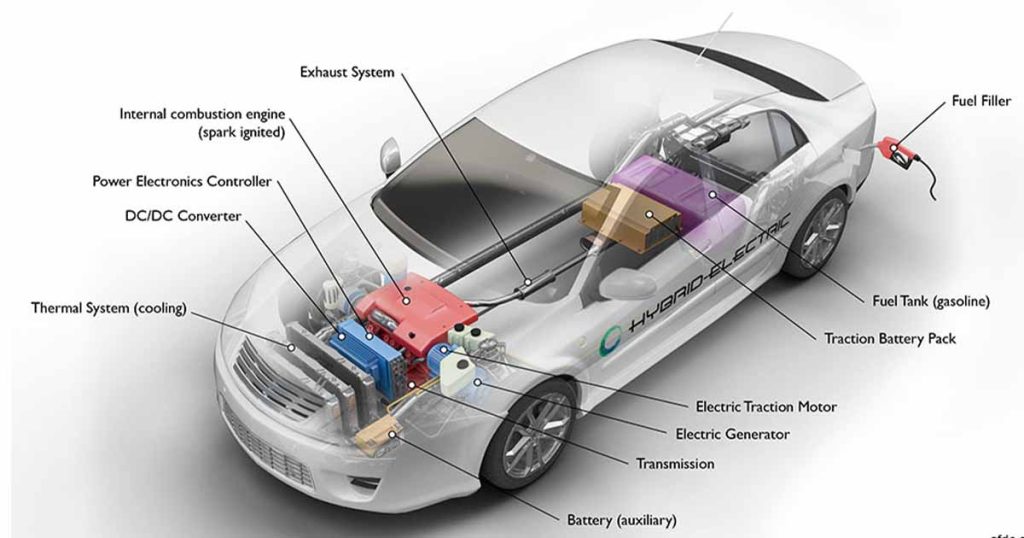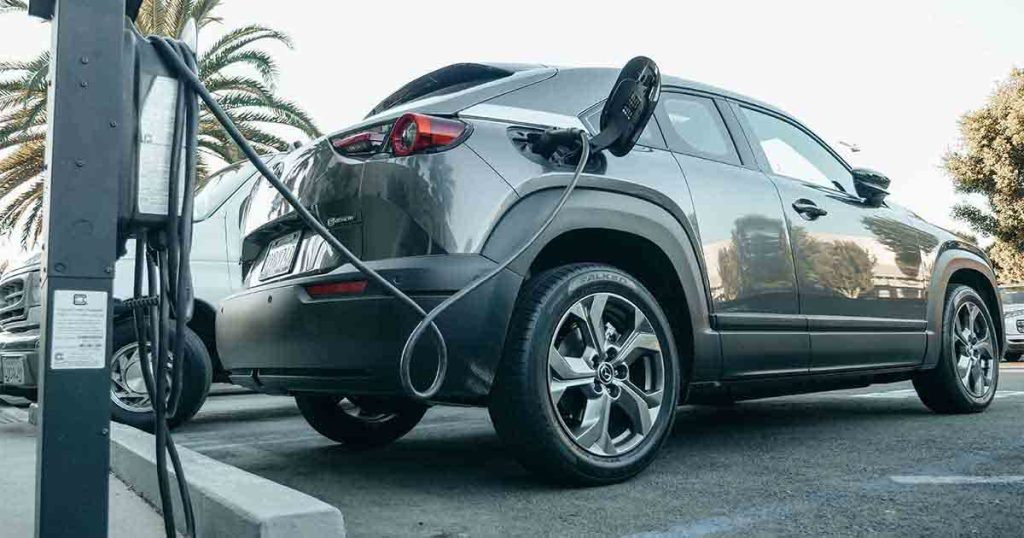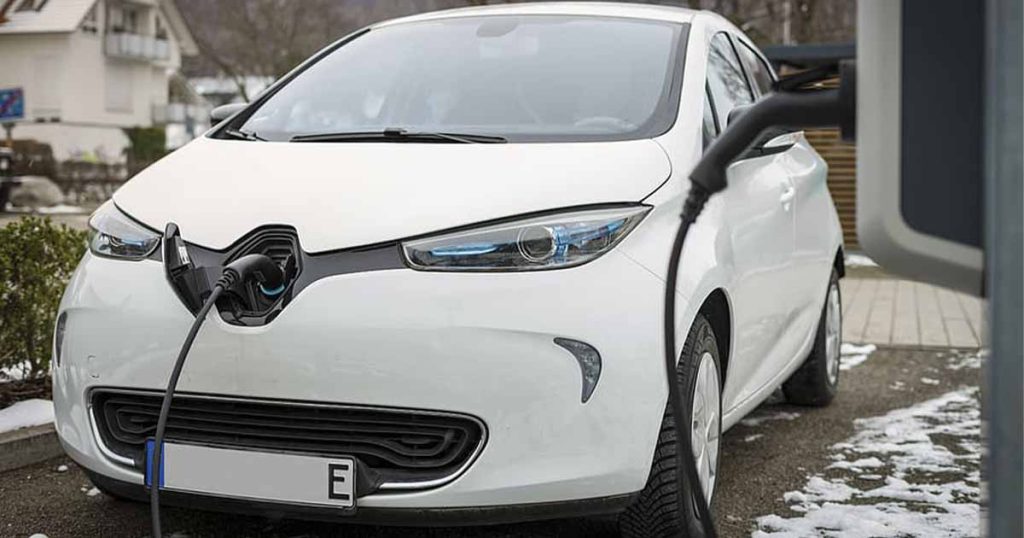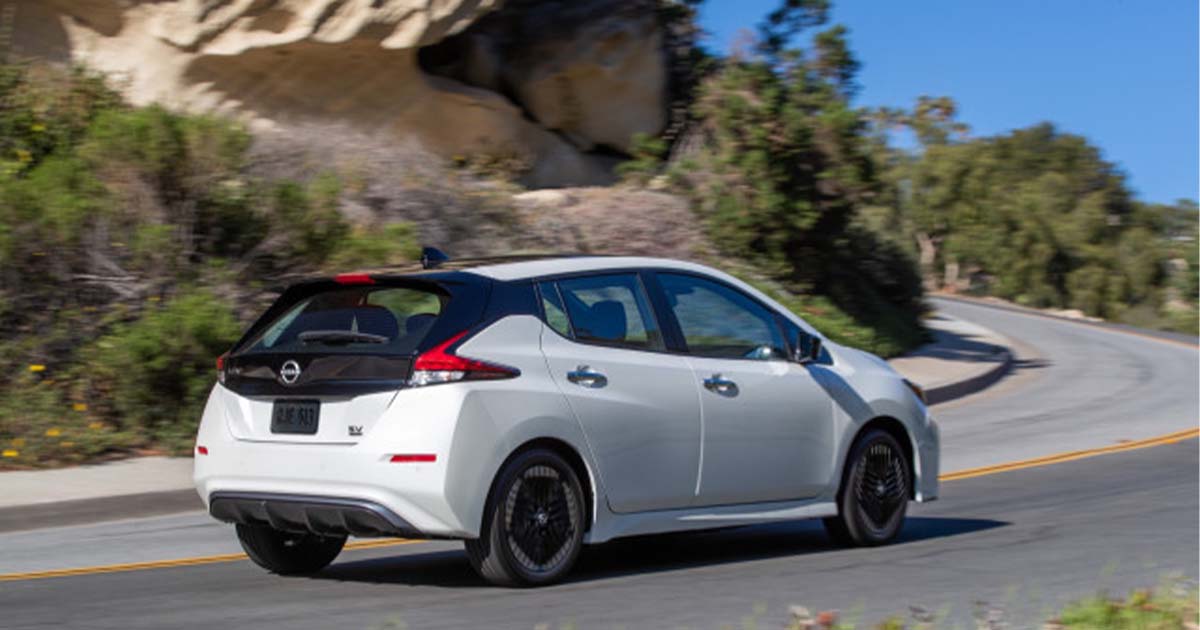Do Electric Cars Need Oil Changes 2025 Best Guide: In the electric vehicle (EVs) era, when EVs entering the mass market is the norm, the auto world is changing. Electrification is a revolution in how we fuel and power the hearts of our cars.
In the case of Legacy ICEV (Internal Combustion Engine Vehicles), regular maintenance is necessary, including services like oil changes, spark plug replacements, and cleaning of the exhaust systems. However, for many electric vehicle owners, these activities are pointless.
EVs don’t have electric motors like a car with an internal combustion engine that uses engine oil to lubricate various moving parts that will wear out over time. And as there’s no engine to worry about, no oil changes, no timing belts or fuel filters. Instead, caring for an EV is mainly about maintaining the health of its battery, keeping the software up to date, rotating the tires, and taking care of the brake system since regenerative braking is hard on brakes and should reduce brake pad wear.
EVs require less maintenance than their internal combustion colleagues, but other factors must be considered, from battery life to charging habits. Smart battery maintenance avoiding boiling temperatures and being choosy about charging whenever possible is key to getting the most from an EV.
Understanding these differences is key for new and would-be EV owners as the auto world shifts. This guide outlines how to upkeep an EV and how this differs from a conventional vehicle.
The Evolution of Vehicle Maintenance: How EVs Are Changing the Game
With the widespread adoption of EVs, the automotive maintenance business has entered a new transformation phase. Once bustling with oil changes, engine repairs and transmission work, traditional service centres are reinjecting to cater to vehicles that need far less routine maintenance.
As such, the move from internal combustion engines (ICEs), which require regular service for optimal and trouble-free operation, to electric motors has reduced many of the most commonplace servicing needs.
No gasoline engine means EVs never need an oil change, spark plugs or an exhaust system repaired. Instead, maintenance pertains to battery health, software updates and brake system care. With regenerative braking working its magic, brake pads have less work to do, which means they last longer. Wheel alignments and coolant-system checks are still needed, but EVs generally require less frequent maintenance than ICE cars.
Though lesser maintenance requirements for EVs are suitable for owners, service providers must adapt to changing needs, such as diagnostics for batteries and repairs of electric motors. The automotive industry is transforming, and knowing those transformations gives us drivers and mechanics the key we need.
Read More: Car financing & insurance
Understanding the Role of Oil in Traditional Gas-Powered Cars

Why Internal Combustion Engines (ICEs) Need Oil
For a good reason, oil is condemned as the lifeblood of an internal combustion engine (ICE) . It is a lubricant to the engine’s many moving parts, easing friction and curbing how quickly they wear out. Lacking adequate lubrication, metal elements and practices like pistons, crankshafts and camshafts would eventually lock against one another, then create friction and ultimately cause irreversible damage.
Over extended periods, such friction leads to mechanical failure and diminished engine efficiency and longevity.
The Function of Oil in Lubrication and Cooling
Besides serving as a lubricant, oil also cools. Circulating through the engine, the oil absorbs generated by combustion, and friction keeps operating temperatures in a manageable range. It ensures the engine doesn’t reach a temperature at which point it warps or fractures.
Engine oil can also be tainted with dirt, metal shavings, and other debris to minimize sludge formation, interfering with performance. However, oil degrades over time, so oil changes are necessary for the engine to continue operating correctly.
What Happens If You Skip Oil Changes in a Gas Car?
Failure Failure to get oil changes in an ICE car could be calamitous. Over time, however, oil breaks down, and its lubricating properties diminish, meaning it is no longer protective of engine components.
That creates friction, and friction grounds wear and tear. Dirty oil thickens , clogs, and settles in the crevasses of the system, and if left there, it will restrict the flow of oil and cause more friction in the motor. Without lubrication and cooling, the motor can overheat and suffer permanent damage. In the worst-case scenario, you neglect to perform oil maintenance, and the engine fails.
It is a fact that changing the oil regularly is an integral part of any maintenance schedule on a regular petrol car. This keeps the car healthy and in top condition, keeping the engine running more efficiently and effectively while avoiding disaster.
One of the most significant differences between internal combustion engines (ICE) and electric vehicles (EVs) is that EVs don’t require oil changes. That’s a substantial shift in how people need to take care of their cars.
Do Electric Cars Use Oil? Debunking the Myth
The Key Differences Between ICEs and Electric Motors
The popularity of EVs continues to rise, but there are still myths about EV maintenance. An EV oil change You might be surprised by the answer.
When our readers reach out about electric vehicle (EV) service and maintenance, it’s most often to ask if they still need oil changes like traditional rigs with internal combustion engines (ICEs) needed.
The short answer is no: no part of an internal combustion engine needs motor oil. They need other essential fluids to function properly.
The Key Differences Between ICEs and Electric Motors
Internal combustion engines have many moving parts pistons, cylinders, crankshafts and others that constantly require lubrication to reduce friction and wear.
Electric motors, however, operate a bit differently. They generate motion via electromagnetic fields, meaning internal lubrication is unnecessary, like in gasoline engines. EVs don’t require any traditional oil because batteries power their electric drivetrains.
Why Electric Vehicles Don’t Require Engine Oil
Do note that there is a difference between internal combustion engine (ICE) vehicles that burn fuel to make mechanical energy, excluding hybrids/some plug-ins, and electric vehicles (EVs), which use electric currents to do so (and/or assist ICE).
This particular difference overshadows oil-based lubricant completely when it comes to the engine. However, some EVs have single-speed transmissions that require unique lubricants. These greases are needed to keep some parts from physically touching, do not degrade like engine oil, and seldom need to be replaced.
In some instances, the vehicle can outlive them. EVs also do not have oil filters, pumps or other components related to oil circulating, so their maintenance needs are even lower. No combustion means no carbon build up and no sludge build up, too, so you won’t be flushing things out as often.
The Only Fluids an Electric Car Needs
Although electric vehicles (EVs) don’t require engine oil, they need a handful of fluids to operate correctly and extend their lives. These fluids are critical to maximizing system efficiency and mitigating wear.
Coolant: This fluid regulates the battery’s temperature, keeping it from becoming overheated and enabling it to function optimally.
Brake Fluid Required to operate the hydraulic braking system. Regenerative braking dramatically reduces brake wear, but brake fluid needs to be checked and replaced.
Windshield Washer Fluid: Many people forget this. You can hardly drive nicely with clouds of dirt on the windshield, and this comes to your rescue.
However, Some EVs use lubricants to reduce gearboxes, which are not as service-heavy on that front as the oil and oil changes required on more conventional vehicles. For the large part, EVs require significantly less maintenance than their traditional combustion counterparts, reducing ownership costs and making them more convenient for their owners.
Electric Car Maintenance: What You Need to Know

One of the most attractive things about an electric vehicle (EV) compared to a traditional internal combustion engine (ICE) is its low-maintenance design. Since there’s no engine, there are no oil changes, spark plug replacements, or exhaust system maintenance.
That said, EVs still need routine servicing for their longevity and performance. One significant component of caring for your EV is keeping fluid levels in check and understanding how core systems work.
Essential Fluids in an EV and Their Functions
Electric vehicles (EVs) don’t use motor oil, but they still rely on some essential fluids to function efficiently and last as long as possible:
- Coolant: Another material in an EV battery pack — the coolant cools the battery as it generates heat from being used, helping it maintain an optimal operating temperature for maximum efficiency. Maintaining coolant at a proper level is critical for energy efficiency and battery health.
- Brake Fluid: The regenerative braking system does reduce brake wear somewhat, but electric vehicles also have hydraulic braking systems, which need brake fluid to make the system (and brakes) do their job. Brake fluid absorbs moisture over time, contributing to a degradation of braking performance, and should be checked and replaced regularly.
- Transmission/Gear Lubricant (if applicable): Certain EV models have reduction transmissions that require specific lubricants for friction reduction and allow smooth operation. Synthetic. They require little maintenance compared with conventional transmission fluids.
Regular inspection and maintenance of these fluids help an EV run as intended, avoiding wear and tear and maintaining system efficiency.
Battery Cooling Systems and Thermal Management
As you know, the battery pack of an electric vehicle (EV) is its most important and expensive component, and as such, it requires good thermal management. Unlike internal combustion engine (ICE) vehicles , whose performance relies on cooling the engine, EVs use their own dedicated cooling systems to maintain the battery at ideal temperatures.
- Liquid-Cooled Systems: Coolant circulates the battery cells to absorb and dissipate the excess heat. They manage the temperature to keep the battery working efficiently and prevent overheating. This does not happen in air-cooled systems; we need to replace the coolant at regular intervals in liquid coolers.
• Air-cooled systems: Ventilation, such as fans or vents, cools the battery. Although these systems are relatively low maintenance and more basic than their liquid-cooled cousins, they’re not as effective in extreme hot or cold conditions, which can degrade battery performance.
This necessitates effective thermal management to ensure optimal lifespan, avoid overheating, and maintain long-term performance. While this should ensure trouble-free operation and long battery life, it won’t prevent the underground parking lot from acting as a mini sauna, hot oil frying your battery, and seriously damaging the chemistry in your lithium-ion bank.
Brake Fluid: Does It Need Regular Replacement?
Yes, EVs do use brake fluid although regenerative brakes prolong the time between changing conventional brake pads. Master Cylinder: What It Does and How It Works The hydraulic braking system supports the use of brake fluid for operational functionality.
Moisture can affect braking performance, and brake fluid can absorb moisture over time. Most manufacturers recommend changing it every two to three years for safe, reliable service.
Transmission and Gear Lubricants: What’s Different in an EV?
Most electric vehicles (EVs) use a single-speed or direct-drive system to replace the complex, multi-gear transmissions used in internal combustion engine (ICE) vehicles. Some models will need a few drops of specialized gear lubricant, but unlike conventional transmission fluid, these lubricants are designed to work for years with little maintenance.
So, while EVs require fewer maintenance chores, checking these critical fluids allows for optimal performance and reliability for years.
Regenerative Braking: How It Reduces Wear and Tear

This is mainly because most electric vehicles (EVs) use regenerative braking, which recovers energy while slowing the vehicle and requires minimal use of ordinary brakes to stop. This system saves EV owners money and improves the vehicle’s overall longevity.
How Regenerative Braking Works in Electric Cars
This process generates regenerative braking, enabling the EV to harness energy usually lost over a long period when braking. When a driver lifts off the accelerator or steps on the brake pedal, this regenerative system reverses the electric motor.
Throughout this, the energy of movement kinetic energy is transformed into electrical energy and stored within the battery for later use. This contributes to less wear and tear on mechanical parts and extends the life cycle of essential brake components by slowing the vehicle without placing so much dependence on the vehicle’s friction-based braking system.
Why EV Brake Pads and Rotors Last Longer
In conventional gas-powered automobiles, braking is purely through friction, causing brake pads and rotors to wear down. On the other hand, EVs use regenerative braking to decelerate the vehicle before the hydraulic braking system kicks in.
Subscribe to Roadshow on YouTube. That translates to brake pads and rotors rarely touched, sometimes two or three times longer than their equivalents in a conventional internal combustion engine (ICE) vehicle. For many, the brake pads on an EV will go over a hundred thousand miles and not need changing.
Do You Still Need Brake Fluid Maintenance?
Brake pads, rotors and brake fluid are still needed, but regenerative braking does help. Hydraulic brake systems remain in EVs for emergency braking or when more stopping force is necessary. With time, brake fluid tends to soak up moisture, which can affect braking efficiency and increase safety concerns.
Most manufacturers recommend inspecting and replacing brake fluid every two to three years to keep the braking system working effectively. Less maintenance and better energy consumption, making it more cost-effective and eco-friendly.
EV Coolant Systems: The Secret to Battery Longevity
The Role of Coolant in Preventing Battery Overheating
Coolant is critical for any electric vehicle (EV), as it keeps the battery cool to maintain its health. EV batteries generate heat as they operate, and if not managed effectively, that heat can significantly reduce their efficiency and lifespan.
Coolant picks up and dissipates this excess heat, helping the battery stay within its comfort zone. Managing this temperature is critical for optimizing battery performance and lifespan and preventing expensive damage.
How Often Should You Check and Refill EV Coolant?
Most EV makers recommend checking the coolant levels during scheduled maintenance visits, usually every 12,000 to 15,000 miles or annually.
Routine coolant system checks help ensure the battery stays within its ideal operating temperature. EVs can have clear reservoirs with coolants (as can ICE vehicles), and basic checks can be done quickly between visits to the mechanic.
Signs Your EV Cooling System Needs Attention
If your EV warns you about battery temperature or indicates reduced performance, it may be a sign that the cooling system is not working correctly.
If you experience unusual fluctuations in battery temperature, a decrease in driving range or a sudden drop in charging efficiency, it may be time to check the coolant system. On such occasions, you must get a service professional quickly so the battery is not damaged further.
The Importance of Cabin Air Filters in Electric Cars

Why Air Filters Matter for Air Quality Inside the Car
The cabin air filter is essential to keeping your electric vehicle (EV) driving environment healthy and comfortable. These filters capture dust, pollen, pollutants and other airborne debris so they don’t pass through the cabin via the HVAC (heating, ventilation and air conditioning) system.
EVs are designed as featureless sealed cabins for maximum energy efficiency, so the air quality inside the cabin will degrade quickly until good filtration can be re-enabled. People suffering from allergies or other respiratory conditions must inhale fresh air, and getting a regular cabin air filter replacement is significant.
A new, clean filter will stop stress from circulating the HVAC system as well as on the components thus leaving them plenty of space to function correctly while enhancing overall comfort in the cabin itself.
How Often Should You Replace an EV’s Cabin Air Filter?
Depending on the driving environment, EV manufacturers generally know that cabin air filters should be changed every 12,000 to 15,000 miles or once a year. If you live in an area with dust or pollution, consider changing your filter more often.
Refer to your vehicle’s owner manual for more specific guidance that applies directly to yours, as other EVs will have different recommendations based on how their filtration systems, or air quality demands, are designed.
DIY vs. Professional Cabin Filter Replacement
Yes, replacing a cabin air filter is an easy job many EV owners can complete. It replaces an old filter with a new one, usually located behind the glove compartment or under the dashboard.
If you have a pro who can reinstall the system, you’ll want to hire someone to cover this because it is usually the case that they check the HVAC system functions when installing a new unit.
But if you’re still debating whether it’s worth a go or you’d prefer not to do it yourself, a professional service can save time and give you peace of mind.
Conclusion
The Future of Car Maintenance in an Electric World
The automotive industry is moving toward electrification, and so is car maintenance. Electric vehicles are making routine car maintenance more straightforward as EVs do away with many parts and tasks associated with every internal combustion engine (ICE).
The days of regularly changing your oil, replacing your spark plugs, and repairing your exhaust system regularly are over. Of course, while EVs need less frequent and less intensive maintenance than gas vehicles, they are not maintenance-free.
The key maintenance items for EVs are regular checks of essential fluids like coolant, brake fluid and transmission lubricants. Just like an ICE Car Battery, i.e., an ICE Car with good cooling & thermal management systems can go a long way in battery longevity.
Also, while systems like regenerative braking are all to help the community with wear-on brake pads and rotors, the brake fluid still needs to be replaced from time to time to function correctly.
EV owners must be familiar with these added maintenance requirements to achieve optimal efficiency and prevent mileage fatigue from their new wheels. The long-term ownership price is generally lower for EVs than gasoline counterparts due to FAR fewer parts and the absence of a drive train to maintain.
As technology develops and maintenance processes mirror this change, electric vehicles will inevitably become a more sustainable part of the future, just as they prove to be an increasingly cost-effective option.
<script type="application/ld+json">
{
"@context": "https://schema.org",
"@type": "BlogPosting",
"mainEntityOfPage": {
"@type": "WebPage",
"@id": "https://cardsinspired.com/do-electric-cars-need-oil-changes-2025best-guide/"
},
"headline": "Do Electric Cars Need Oil Changes? 2025 Best Guide",
"image": [
"https://cardsinspired.com/wp-content/uploads/2025/04/Do-Electric-Cars-Need-Oil-Changes-1.jpg",
"https://cardsinspired.com/wp-content/uploads/2025/04/Do-Electric-Cars-Need-Oil-Changes-5-1024x538.jpg",
"https://cardsinspired.com/wp-content/uploads/2025/04/Do-Electric-Cars-Need-Oil-Changes-2-1024x538.jpg",
"https://cardsinspired.com/wp-content/uploads/2025/04/Do-Electric-Cars-Need-Oil-Changes-4-1024x538.jpg",
"https://cardsinspired.com/wp-content/uploads/2025/04/Do-Electric-Cars-Need-Oil-Changes-3-768x403.jpg"
],
"author": {
"@type": "Person",
"name": "cardsinspired.com",
"url": "https://cardsinspired.com/"
},
"publisher": {
"@type": "Organization",
"name": "cardsinspired.com",
"logo": {
"@type": "ImageObject",
"url": ""
}
},
"datePublished": ""
}
</script>